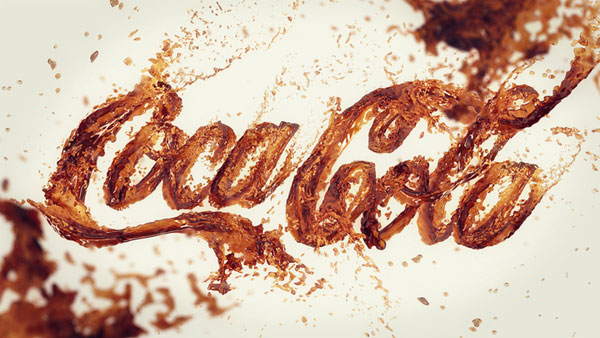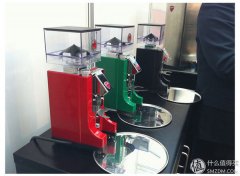Coca-Cola enters the mainland coffee market again and takes the lead in Hangzhou.
"I didn't expect Coca Cola to have coffee too. Is it trying to compete with Nestle and Starbucks?" Yesterday, Xiao Qin, who was shopping in a supermarket in the west of the city, accidentally found a new face on the coffee beverage shelf.
After the entire beverage industry bid farewell to the golden age of high growth, ready-to-drink coffee, a niche beverage market with a high compound growth rate of 34.2%, is making it the new favorite in the industry. Coca-Cola, which once abandoned the ready-to-drink coffee market in mainland China after its partnership with Nestle collapsed, has made a comeback and announced the official launch of its own brand of ready-to-drink coffee in China. The former "partner" became the opponent.
Industry insiders believe that Coca-Cola's ready-to-drink coffee, coffee market segmentation and positioning of primary consumer groups, as latecomers face a very big challenge.

Hangzhou Market Launch
Mass channel pricing below 5 yuan
It is reported that Coca-Cola China launched "GEROGIA" coffee products, belong to ready-to-drink coffee products, founded in 1975, mainly in Seoul, Hong Kong, Tokyo and other overseas cities, annual sales of more than 1 billion US dollars. Within the Coca-Cola system, it has become one of its 17 brands with annual sales of more than $1 billion and has been awarded the "World's Best Selling Ready to Drink Coffee" rating.
"Qiao Ya" China trip, official news said, select Brazil, Vietnam imported coffee, choose all imported milk sources, by Coca-Cola's global innovation and technology center in Shanghai tailor-made for Chinese consumers "mellow latte" and "fragrant classic" two flavors. Starting from mid-to-late October this year, Shanghai, Beijing, Guangdong, Zhejiang, Jiangsu, Fujian and Anhui will be selected as the first major cities to be sold.
"At present, I have only seen a bottle of sample brought by the supplier, but I haven't really entered the site to distribute the goods." A food manager at a supermarket in the south of the city estimates that the first batch of Qiao Ya should be available in the store this week. The reporter inquired about a circle, Hangzhou market mass channels have not yet been fully distributed goods. According to the product specifications and price list obtained, both Fragrant Classic and mellow latte are packaged in 268ml plastic bottles and 180ml cans. The suggested retail prices of stores, supermarkets and grocery stores are 5 yuan and 4 yuan respectively. Convenience store plastic bottle packaging is expensive 1 yuan, suggested pricing 6 yuan.
Second entry into the domestic market
Carbonate giants don't give up coffee complex
According to the survey data of Canadia, UK, from 2009 to 2013, the compound growth rate of ready-to-drink coffee in China reached 34.2%, and it is estimated that sales will reach 79 million TEUs in 2014. Coca-Cola China said that it was precisely because of the huge potential and market demand contained in the ready-to-drink coffee beverage category that it chose to introduce "Qiaoya".
In fact, this is Coca-Cola's second coffee market in China. As early as 2001, in order to expand its beverage business, Coca-Cola and Nestle established a semi-joint venture BPW, a ready-to-drink tea joint venture company worldwide. In 2005, the two beverage companies joined forces to enter the ready-to-drink coffee market.
However, the marriage lasted only until the end of 2006, when both sides announced that they would reduce the joint venture's product range, including ready-to-drink coffee and non-red and green beverage products, and Nestle and Coca-Cola began to go their separate ways.
Although it seems to be a failed cooperation, it is generally believed in the industry that Coca-Cola has gained a lot from it, especially when it is responsible for product distribution, it has mastered the preferences of domestic consumers and channel sales resources in advance, laying a solid foundation for this second march.
Stealing Starbucks Nestle business?
Or make up for carbonation?
On the beverage shelf of a supermarket in the west of the city, drinks such as ready-to-drink coffee and walnut juice share a small area. The ready-to-drink coffee brands on sale include Nestle, Yaha, Kirin, Liziyuan, Wahaha, Brown, and a newly launched Qiaoya, 268 ml of fragrant classic flavor plastic bottle for 4.9 yuan. The same specification of Nestle silky latte also sells for 4.9 yuan, another silky mocha is priced at 5 yuan.
"In fact, ready-to-drink coffee is a niche market segment, and it is very difficult for latecomers to compete for the top spot. However, coke has a wealth of resources in the distribution market and can even tie them in, enabling new products to quickly gain market attention." A retail observer in Hangzhou thinks.
It is reported that Hangzhou supermarket ready-to-drink coffee joint venture brand Nestle accounted for a far leading proportion, and imported categories also Taiwan's Brown and Starbucks from South Korea sales growth is obvious, among which a supermarket Starbucks sales growth reached 300% last year, but the corresponding is domestic and joint venture brand sales significantly declined.
For Coca-Cola to sell coffee independently, another comment voice thinks it is to make up for the embarrassment of the decline in carbonated beverage performance.
Hangzhou city a large supermarket wine procurement responsible person said, As far as Hangzhou market is concerned, Carbonated beverage overall sales decline has been an indisputable fact, Its dominance has been replaced by tea, And juice drink to its threat is also very big.
Can new coffee really exert such a great force? Observers disagree. Zhu Danpeng, a researcher at the China Food Business Research Institute, has publicly stated that although the overall sales volume of ready-to-drink coffee has maintained an annual growth rate of more than 30%, it accounts for less than 2% of the entire beverage industry and is still facing the embarrassment of "high price and small volume".
"The more comprehensive reality is that Coca-Cola has continued to launch new products in recent years, including Yiquan +C, which was launched in the first half of this year. It has been used in carbonated drinks, juice drinks, tea drinks, water drinks, etc., plus now ready-to-drink coffee, almost covering the whole beverage industry." A senior beverage practitioner believes that it is not surprising that Coca-Cola sells coffee. In the face of a global decline in the performance of established products, Coca-Cola adopts a strategy of multi-point flowering to continue its leading position in the beverage industry.
Important Notice :
前街咖啡 FrontStreet Coffee has moved to new addredd:
FrontStreet Coffee Address: 315,Donghua East Road,GuangZhou
Tel:020 38364473
- Prev

There is a serious shortage of coffee beans in the world, and overseas buyers have set their sights on China's producing areas.
Great wisdom Asdak news agency, October 29, due to the world's largest coffee producer Brazil suffered a persistent drought, coffee bean production has dropped sharply, international buyers have set their sights on the Chinese market.
- Next

LIFFE coffee futures prices fell sharply yesterday.
London International Financial Futures and options Exchange (LIFFE)-September Robusta coffee futures fell $47, or 2.3%, to $2009 a tonne. Benchmark ICE futures closed down $6, or 0.2%, at $3081 the following month. LIFFE- September cocoa futures turned higher in late trading, closing 3 pounds higher, or 0.2 percent, at 1915 pounds a tonne. Data show cocoa processing volume in Europe in the second quarter
Related
- Being chased out of the rain in front of Starbucks?! Store: Sheltering from rain under umbrellas poses a safety hazard
- The white moonlight has changed?! Lucky launches "Big Winter Pear American"
- Hand-brewed coffee three-stage method, high-sweet and universal brewing method to share! What does the high sweet water level of hand-brewed coffee mean?
- What is the difference between raw, refined and full espresso coffee? How to extract espresso and taste good?
- A complete list of coffee bean names and their meanings! What is Yejia Shefi coffee? Where is Mantelin coffee?
- What grade does Arida Manor Kaduai coffee beans belong to? What treatment is Arida ASD slow anaerobic sun exposure?
- The milk tea cup becomes smaller?! Overlord Tea Girl launches a new "Return to Yunnan" series
- Accused of selling counterfeit and high-priced coffee beans! Well-known boutique coffee brand "Oukelao" bowed and apologized!
- How to make espresso dumplings? Can I eat coffee and glutinous rice balls together?
- Save the unformed and stagnant powder cakes in one second! What is the problem with stagnant water in the powder bowl of the espresso machine?

